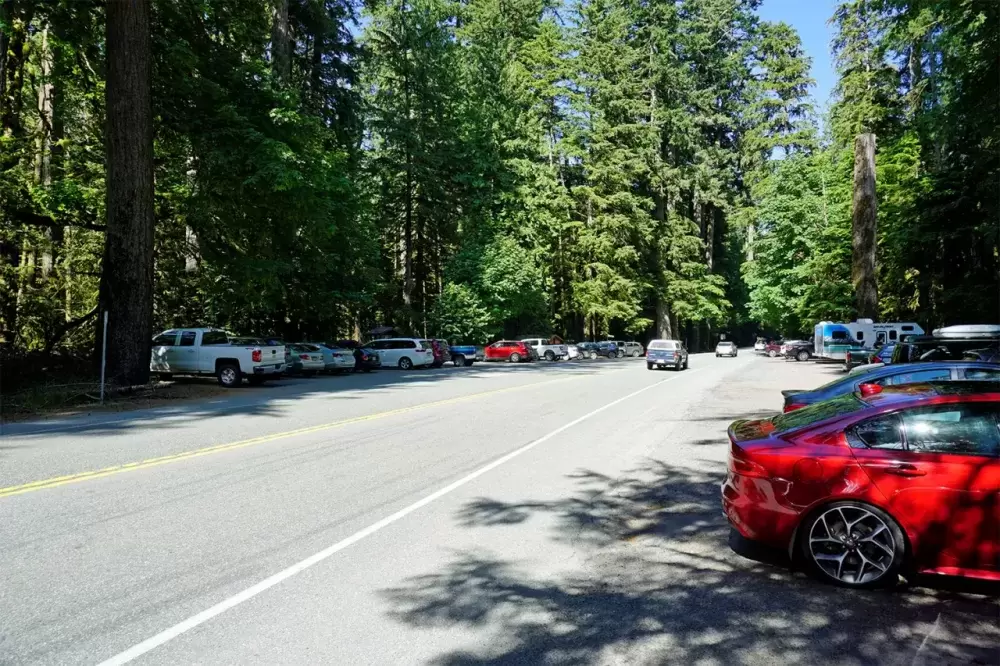Two more open houses have just wrapped up where the public had the opportunity to review and evaluate preliminary ideas to improve safety and access at Cathedral Grove.
More than 500 people submitted ideas to improve safety and access at Cathedral Grove in MacMillan Provincial Park during consultations that began in fall 2018.
The open houses were part of Phase 2 of the Ministry of Transportation and Infrastructure’s (MoTI) engagement process. They took place in Parksville on June 19 and Port Alberni on June 20 and saw approximately 50 people attend. At these open houses, the MoTI showcased a number of options to address traffic and pedestrian safety concerns at Cathedral Grove, while protecting the integrity of the park.
“The ministry is seeking feedback from the public on these options, which will be considered as part of the further assessment work, leading towards a preferred solution,” said the MoTI in an emailed statement. “The feedback from the open houses was positive and there was plenty of support on the ministry’s approach to developing options. Members of the public were also pleased to see their suggestions from the first round of engagement represented in the options that were presented.”
The ministry will be publishing the results of the second round of engagement on their website in late summer.
After analyzing the strengths and challenges of each idea, the MoTI presented the most feasible suggestions for further public discussion during phase 2.
Ideas for discussion varied from short-term safety improvements like improved signage, traffic calming and enforcement, to more medium to long-term measures, including pedestrian overpass ideas, various existing parking area improvements, additional parking capacity and bypass options.
Although several participants suggested a bypass could reduce traffic traveling through Cathedral Grove, the MoTI, in a safety study, say the scale, complexity and cost would not allow implementation of a bypass in the short-term.
The first phase of the Cathedral Grove Pedestrian and Traffic Safety Study focused on listening and understanding. The goal was to work with participants to identify potential ideas that address both safety concerns and protection of Cathedral Grove’s inherent values.
Public ideas from the first phase included 316 suggestions to relocate or add parking to a different area, 138 suggestions for more trails to connect to parking and provide safe routes, 290 suggestions to consider a pedestrian overpass or underpass, 255 suggestions to consider a highway bypass around the park and 124 comments about protecting old growth trees.
Cathedral Grove, at the edge of the Nuu-chah-nulth territory, is world-renowned for its giant old-growth Douglas Firs, which attract approximately 500,000 visitors annually. Most visitors arrive by vehicle, park along Highway 4 and cross the highway to visit both sides of the park. On an average summer day, over a two-hour period, about 530 pedestrians cross the highway in Cathedral Grove in unauthorized locations.
Counts form the past three summers, show parking demand often reaches twice the area’s capacity in the summer between 10 a.m. and 4 p.m. and periodic traffic counts show a steady increase in the number of vehicles passing through Cathedral grove.
The ministry will use the public input from Phase 2 of the engagement to reduce the long list of options to a short list of preferred aproaches that would be shared with the public in a third round of engagement in the fall of 2019.
British Columbians can provide input until July 31st at https://engage.gov.bc.ca/cathedralgrove/.







